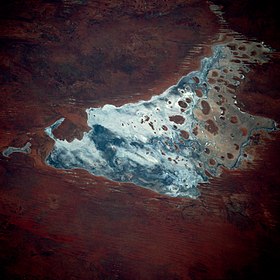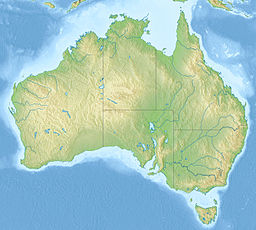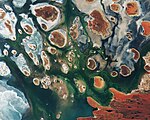
The Simpson Desert is a large area of dry, red sandy plain and dunes in the Northern Territory, South Australia and Queensland in central Australia. It is the fourth-largest Australian desert, with an area of 176,500 km2 (68,100 sq mi).
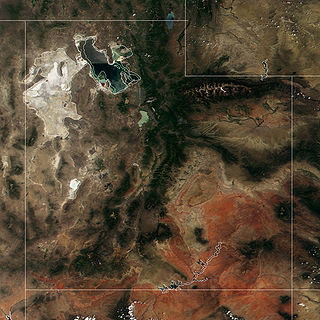
The Great Salt Lake Desert is a large dry lake in northern Utah, United States, between the Great Salt Lake and the Nevada border. It is a subregion of the larger Great Basin Desert, and noted for white evaporite Lake Bonneville salt deposits including the Bonneville Salt Flats.

The Hon. David Wynford Carnegie was an explorer and gold prospector in Western Australia. In 1896 he led an expedition from Coolgardie through the Gibson and Great Sandy Deserts to Halls Creek, and then back again.
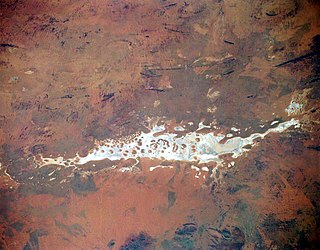
Lake Amadeus is a large salt lake in the southwest corner of Northern Territory of Australia, about 50 kilometres (31 mi) north of Uluru. The smaller Lake Neale is adjacent to the northwest. It is part of the Amadeus Basin that was filled with the erosion products of the Petermann Orogeny.
Kintore is a remote settlement in the Kintore Range of the Northern Territory of Australia about 530 km (330 mi) west of Alice Springs and 40 km (25 mi) from the border with Western Australia. It is also known as Walungurru, Walangkura, and Walangura.
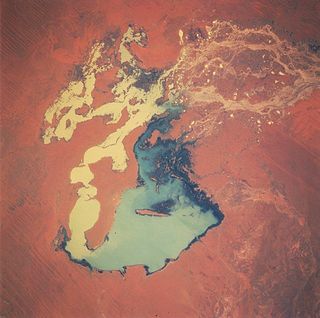
Lake Gregory, or Paraku in the Walmajarri language, is a permanent brackish lake located in the Kimberley region of Western Australia, situated between the Great Sandy Desert and the Tanami Desert. Following monsoonal rains it may hold fresh water, but becomes more saline after a number of dry years.

Lake Gairdner is a large endorheic salt lake in the Australian state of South Australia, to the north of the Eyre Peninsula. When in flood, the lake is considered the third largest salt lake in Australia.
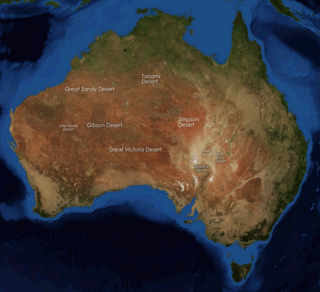
The deserts of Australia or the Australian deserts cover about 2,700,000 km2 (1,000,000 sq mi), or 18% of the Australian mainland, but about 35% of the Australian continent receives so little rain, it is practically desert. Collectively known as the Great Australian desert, they are primarily distributed throughout the Western Plateau and interior lowlands of the country, covering areas from South West Queensland, Far West region of New South Wales, Sunraysia in Victoria and Spencer Gulf in South Australia to the Barkly Tableland in Northern Territory and the Kimberley region in Western Australia.
The Lake Mackay hare-wallaby, also known as the central hare-wallaby or kuluwarri, is an extinct species of macropod formerly found in central Australia. Very little is known about it.
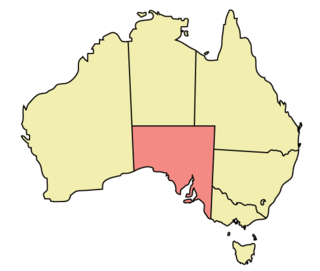
The geography of South Australia incorporates the south central part of the continent of Australia. It is one of the six states of Australia. South Australia is bordered on the west by Western Australia, to the north by the Northern Territory, Queensland to the northeast, and both New South Wales and Victoria to the east. South Australia's south coast is flanked by the Great Australian Bight and the Southern Ocean.
Donald George Mackay CBE was an Australian outdoorsman, long-distance cyclist, and explorer who conducted several expeditions to the remotest areas of the Australian continent.

Lake Breaden is a salt lake in the Gibson Desert of Western Australia, to the northeast of Boyd Lagoon. It covers an area of roughly 2,600 hectares and has a surface elevation of 395 metres (1,296 ft) above sea level.
The Kelly Hills are a mountain range at the southern end of the Northern Territory of Australia. It is located in the locality of Petermann directly north of the Musgrave Ranges and about 50 kilometres (31 mi) northeast of Amaṯa in South Australia. Its highest point is about 870 metres (2,850 ft) above sea level. Mount Robert, at the eastern end of the range, is about 796 metres (2,612 ft) above sea level. The area is known as Aputjilpinya in the native Yankunytjatjara language. It forms part of an important Mala Dreaming track that runs between Uluṟu and Ulkiya.

The Serpentine Lakes is a chain of salt lakes in the Great Victoria Desert of Australia. It runs for almost 100 km (62 mi) along the border between South Australia and Western Australia. When full, the lakes cover an area of 9,700 hectares (97 km2). Most of it is located in the Mamungari Conservation Park. The Anne Beadell Highway crosses the northernmost arm of the lake.
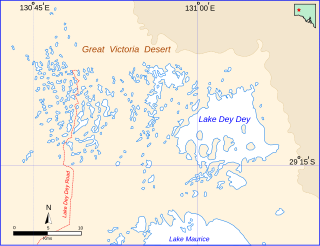
Lake Dey Dey is one of many ephemeral salt lakes located in the eastern end of the Great Victoria Desert, in the Far North region of South Australia.

Carle Thulka, officially Carle Thulka / Lake Maurice is a salt lake in South Australia. It is the largest of many salt lakes in the eastern end of the Great Victoria Desert. It is normally dry, except during and after periods of heavy rainfall. When it is full, the lake covers an area of around 2,900 hectares (29 km2). It is part of the geological basin known as the Officer Basin. The smaller Lake Dey Dey is to the north. Since 1985, Carle Thulka is part of the lands belonging to the Maralinga Tjarutja, a southern branch of the Pitjantjatjara. The community of Oak Valley is near the western shore of the lake.

The Percival Lakes form a string of S-shaped ephemeral salt lakes in the north of Western Australia. They lie at the southern region of the Great Sandy Desert and east of Karlamilyi National Park. They stretch in an east-west direction for 350 km (220 mi) and north-south for 160 km (99 mi). The surface elevation is 256 m (840 ft). The Canning Stock Route runs in close proximity to some of the lakes, and crosses the salt pan of Tobin Lake near the eastern end. The lakes were named during the aerial expedition of Donald George Mackay in 1933, after the designer of the Percival Gull aircraft being used.

Lake Wells is an ephemeral salt lake in the centre of Western Australia, lying in close proximity to Lake Carnegie. It lies east of Wiluna and is at the southern edge of the Little Sandy Desert and south western border of the Gibson Desert. It also lies to the north west of the Great Central Road and the Great Victoria Desert. Its surface elevation is 436 metres above mean sea-level. Lake Wells has an area of 1895 square kilometres.

The Carnegie expedition of 1896 was led by David Carnegie. It covered territory in the centre of Western Australia, including the Gibson and Great Sandy Deserts.
